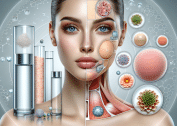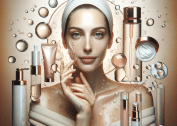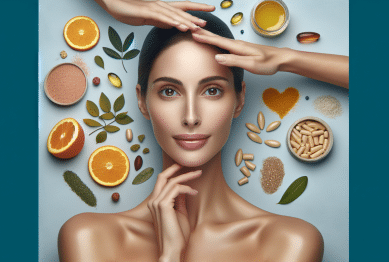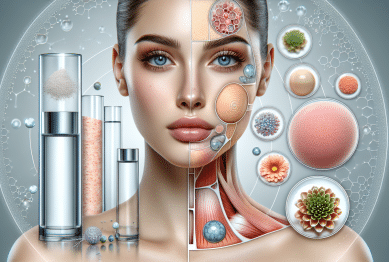Discover how daily routines and evidence-backed wellness strategies can help you support clearer, healthier-looking skin. This article unpacks the science and practical tips behind radiant skin, covering hydration, mindful nutrition, gentle cleansing, and the impact of stress. Explore options to enhance your glow without overcomplicating your self-care.
Hydration and Its Impact on Your Skin’s Vitality
Hydration plays a central role in skin health, often serving as the foundation for a radiant complexion. Water helps the skin maintain its elasticity, suppleness, and youthful appearance. As the largest organ in the body, the skin requires sufficient water intake to support cellular function and flush out toxins. Dehydrated skin may appear dull, flaky, or more prone to irritation. By incorporating consistent hydration practices—such as sipping water throughout the day or enjoying water-rich fruits and vegetables—people support their skin’s natural barrier and resilience. Even mild dehydration can influence the way skin looks and feels.
External hydration is just as important as internal, particularly when environmental factors like wind, sunlight, and pollution put additional stress on the skin. The use of gentle moisturizers can help lock in moisture and reinforce the skin’s protective barrier. Lightweight, fragrance-free creams or serums enriched with hyaluronic acid often receive recommendations in dermatology guides for retaining water in the upper skin layers. Consistent application after cleansing or showering keeps hydration levels steady and can reduce dryness or sensitivity.
Some research suggests that certain ingredients, such as ceramides and glycerin, further promote optimal moisture retention. Adopting a holistic approach that combines internal hydration with topical emollients encourages long-term improvement. In addition, avoiding harsh soaps and prolonged exposure to hot showers prevents the loss of natural oils. Hydration is not a trend; it’s an ongoing commitment. Everyone can benefit from cultivating habits that replenish the skin from within and shield it from dehydration triggers. Staying hydrated is a cornerstone of healthy-looking skin. (Source: https://www.aad.org/public/everyday-care/skin-care-basics/dry/hydrate)
The Power of Gentle Cleansing for Lasting Glow
Gentle cleansing practices are essential for promoting a clear and comfortable complexion. Overscrubbing or the use of harsh products can disrupt the skin’s delicate balance, often resulting in heightened sensitivity, dryness, or breakouts. Dermatologists advise using pH-balanced, sulfate-free cleansers that remove excess oil and debris while preserving the skin’s protective lipid layer. Cleansing should feel refreshing rather than stripping. In most cases, washing the face twice daily—morning and night—strikes the right balance between cleanliness and barrier support.
Double cleansing, a popular skincare trend, involves using an oil-based cleanser followed by a water-based formula. This two-step routine effectively lifts stubborn pollutants, sunscreen, and makeup, reducing the potential for clogged pores without causing damage. By selecting gentle, non-comedogenic options, individuals can tailor their cleansing to their specific skin needs—whether dry, oily, or combination. Consistency in cleansing is more important than overcomplicating the process with multiple products.
Additional best practices include patting the face dry with a clean, soft towel rather than rubbing, and using lukewarm water to avoid irritation. Cleansing devices, such as silicone brushes, should be used sparingly and only for those without prevailing skin conditions like active acne or rosacea. Ultimately, the strength of a cleansing routine lies in its simplicity and gentleness. Focusing on supporting the skin’s natural balance, rather than stripping it, encourages a lasting healthy glow. (Source: https://www.aad.org/public/everyday-care/skin-care-basics/care/clean-face)
Nutrient-Rich Diets and Their Effects on Skin Health
What you eat directly influences your skin’s appearance and ability to recover from daily stressors. Diets rich in vitamins A, C, and E, as well as omega-3 fatty acids, have been associated with improved skin elasticity, reduced inflammation, and brighter tone. These nutrients—abundant in leafy greens, berries, nuts, seeds, and oily fish—help combat oxidative stress and support collagen production. Fiber-rich foods also aid in the removal of toxins, which can impact the skin’s clarity when built up in excess.
Emerging research highlights the intimate connection between gut health and the skin, often referred to as the gut-skin axis. A balanced intake of probiotics and prebiotics found in yogurt, kefir, bananas, and whole grains fosters a healthy gut microbiome. When the digestive system functions optimally, the skin often reflects that harmony with fewer blemishes, less redness, and greater resilience. It is not about quick fixes but rather building consistent patterns over time for sustained results.
Conversely, diets high in sugar, processed foods, and trans fats may contribute to acne and inflammation. While occasional indulgence is part of life, moderation supports better skin. Consulting a nutritionist or registered dietitian can provide further insights for those wishing to adjust their eating habits. Real change comes from small, sustained dietary improvements that nourish both internal wellness and external beauty. (Source: https://www.hsph.harvard.edu/nutritionsource/nutrition-and-healthy-skin/)
Stress Management and Its Role in Radiance
Stress isn’t just a mental hurdle—it can undermine the skin’s appearance and health as well. Chronic stress elevates cortisol, the body’s primary stress hormone, which has been linked to flare-ups of conditions including acne, eczema, and psoriasis. Practicing stress management through mindfulness, deep breathing, or yoga can lead to noticeable improvements in the skin over time. These practices help regulate hormonal balance and reduce inflammatory responses, both key to a glowing complexion.
Getting adequate rest also allows the skin to enter its natural repair phase. Sleep deprivation can lead to a dull, lackluster complexion, under-eye circles, and even increased sensitivity to allergens. Creating bedtime rituals—such as limiting screen time, using calming scents, or practicing progressive relaxation—contributes to better sleep. When the mind and body are rested, the skin can better renew itself and maintain optimal barrier function.
It’s important to approach stress reduction as a lifestyle shift rather than a one-time intervention. Establishing healthy boundaries, nurturing social connections, and engaging in enjoyable activities all form part of a balanced strategy. Over time, many individuals find that improved emotional well-being is reflected externally. The connection between inner calm and outer radiance is powerful, rooted as much in science as in self-care. (Source: https://www.psychologytoday.com/us/basics/stress/stress-and-your-body)
Sun Protection Is Essential, Every Single Day
Daily sun protection is a non-negotiable element of long-term skin health. Even on cloudy days or indoors, ultraviolet (UV) rays can damage the skin, breaking down collagen and accelerating the appearance of fine lines, wrinkles, and spots. Broad-spectrum sunscreen with SPF 30 or higher, applied generously and regularly, forms the first line of defense. Wearing protective clothing, sunglasses, and wide-brimmed hats further helps shield the skin from premature aging and other consequences of UV exposure.
Sun protection is especially crucial for those using exfoliants or retinoids, as these treatments can heighten sensitivity to rays. Reapplying sunscreen every two hours, especially after swimming or sweating, is essential for ongoing protection. Many modern sunscreens are formulated to be lightweight and non-greasy, making compliance easy as part of a morning routine. Tinted sunscreens can also provide additional camouflage for those concerned about hyperpigmentation.
The positive long-term outcomes of strict sun protection are well-documented; reduced risk of skin cancers, fewer visible signs of aging, and a more even skin tone all result from this vigilant habit. Encouraging children and teens to adopt sun-safe habits from an early age sets the stage for lasting skin health. Keeping sun protection simple and consistent remains one of the wisest strategies for preserving healthy, youthful skin. (Source: https://www.cancer.org/cancer/skin-cancer/prevention-and-early-detection/sun-safety.html)
The Subtle Influence of Everyday Environmental Factors
Pollution, harsh weather, and blue light from screens can subtly impact the skin’s health over time. Urban dwellers, in particular, often notice how airborne particles and toxins can exacerbate sensitivity or premature aging. Antioxidants—found in both skincare and diet—can help neutralize some of these environmental effects. Vitamin C serums, for example, are often used to provide an additional defense against free radicals, while eating berries and leafy greens supplies these protective compounds from the inside out.
Indoor air quality should not be overlooked. Dry environments caused by heating or air conditioning may strip skin of moisture. Simple actions—such as using a humidifier, choosing non-irritating household cleaners, and reducing the time spent in direct contact with heaters—can support comfortable skin. It’s not just about skincare products but rather making mindful adjustments throughout the living space.
Finally, reducing blue light exposure before bed not only supports better sleep, as discussed previously, but also minimizes potential oxidative stress on the skin. Screen time management combined with protective creams that include antioxidants and SPF can create a helpful barrier. Environmental awareness is a modern dimension of self-care, intertwining lifestyle choices and beauty routines for healthier, more resilient skin. (Source: https://www.aad.org/public/everyday-care/skin-care-basics/dry/environment)
References
1. American Academy of Dermatology. (n.d.). How to hydrate your skin. Retrieved from https://www.aad.org/public/everyday-care/skin-care-basics/dry/hydrate
2. American Academy of Dermatology. (n.d.). How to safely cleanse your skin. Retrieved from https://www.aad.org/public/everyday-care/skin-care-basics/care/clean-face
3. Harvard T.H. Chan School of Public Health. (n.d.). Nutrition and healthy skin. Retrieved from https://www.hsph.harvard.edu/nutritionsource/nutrition-and-healthy-skin/
4. Psychology Today. (n.d.). Stress and your body. Retrieved from https://www.psychologytoday.com/us/basics/stress/stress-and-your-body
5. American Cancer Society. (n.d.). Sun safety. Retrieved from https://www.cancer.org/cancer/skin-cancer/prevention-and-early-detection/sun-safety.html
6. American Academy of Dermatology. (n.d.). Environment and your skin. Retrieved from https://www.aad.org/public/everyday-care/skin-care-basics/dry/environment









